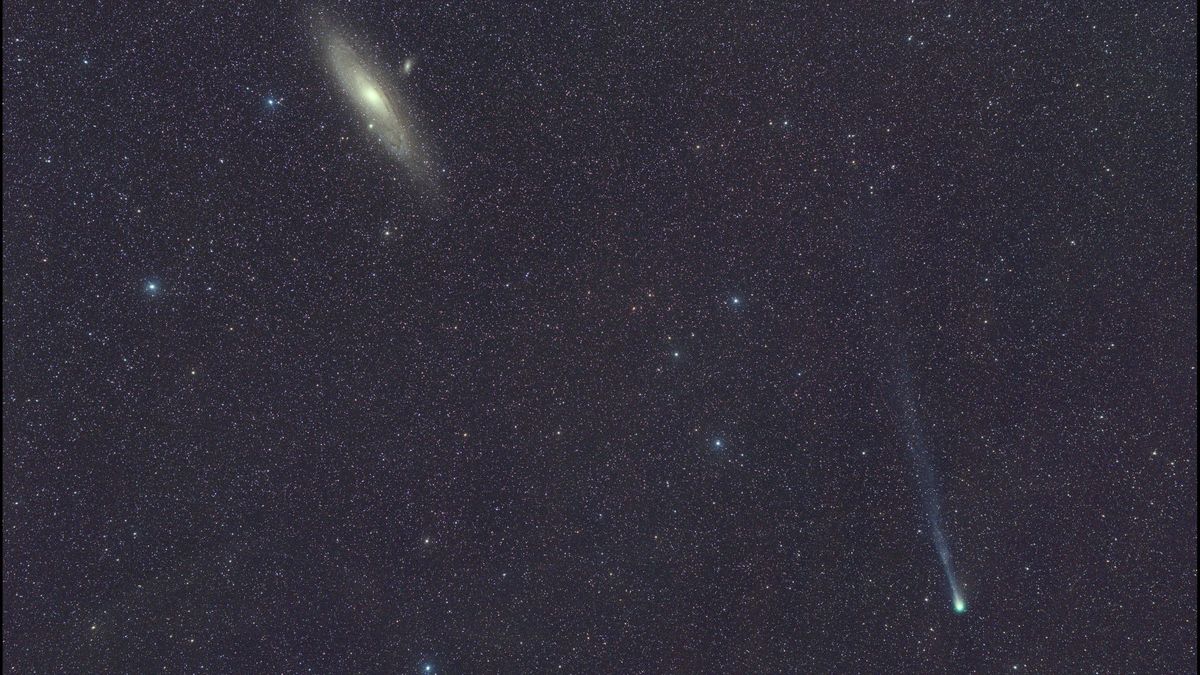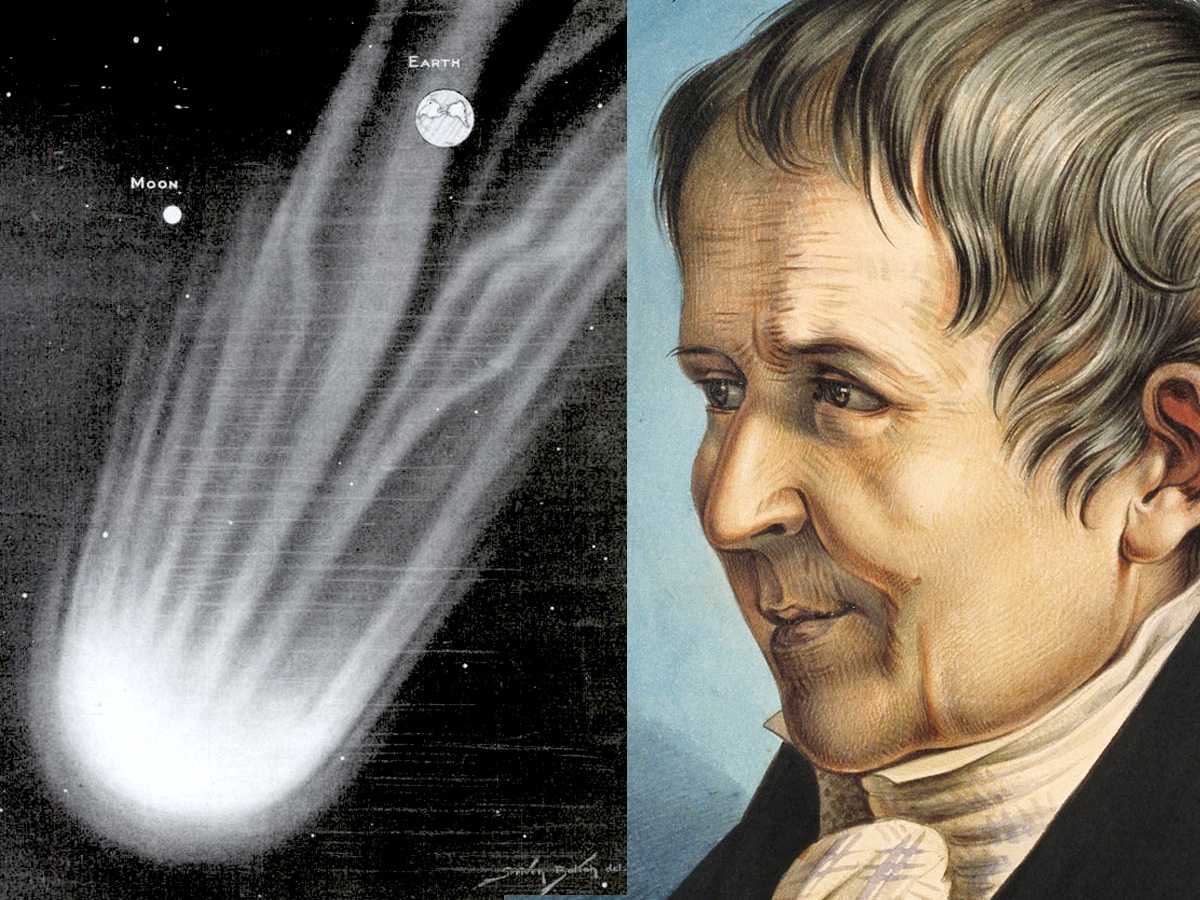
El comet 12P/Pons-Brooks It has the distinction of being one of the most massive comets ever observed. What sets him apart is the fact that for many of us, this will likely be a once-in-a-lifetime opportunity to witness his greatness. To not miss it, mark April 21 on your calendar, since everything indicates that it will be the day it will get closest to the Sun.
In this article we are going to tell you how you can see comet 12P/Pons-Brooks and how it was discovered.
Comet 12P/Pons-Brooks

The celestial body known as 12P/Pons-Brooks, commonly known as a Halley-type object, is a huge icy, dusty rock with a diameter of more than 30 kilometers. These objects, that orbit the Sun between 20 and 200 years, share the same classification.
The particular situation we are discussing poses a greater challenge in terms of visibility due to its orbital cycle, which It takes approximately 71,3 years to complete. This comet falls into the category of cryovolcanic, meaning that as its internal temperature increases, the pressure increases and releases a combination of dust, gases and ice through eruptions. Its visibility will be limited to the months of March and April in the northern hemisphere.
The brightness of comet 12P/Pons-Brooks It is steadily intensifying currently and is expected to reach maximum brightness in late April 2024., potentially reaching a magnitude of 4 or higher. Consequently, it will be more easily observable during this time. However, its visibility will be limited to the northern hemisphere during the months of March and April, while those in the southern hemisphere will have to be patient until early May to catch a glimpse of its splendor.
The celestial body known as the Great Comet is named after its two original observers. Jean-Louis Pons, a French astronomer, was the first to detect it in 1812. Then, after a gap of 71 years, the comet It reappeared and was observed once again, this time by the British-American astronomer William Robert in 1883.
devil kite

After the explosion of 2023, a devil-like figure emerged, characterized by its horn-shaped appearance.
This expansive comet, in addition to its designated title, is also recognized as "Diablo" due to a momentous event in 2023 when it suffered an explosive eruption, expelling copious amounts of gas and dust that resulted in a staggering 100-fold increase in its luminosity. The detonation was so immense that the comet underwent a transformative deformation, assuming a distinctive horn-shaped structure, thus earning its nickname.
Although experts say that detecting the comet without visual aids will be a challenge, there is a possibility of witnessing this phenomenon if we are in an area with minimal light pollution and favorable atmospheric conditions. Using basic binoculars or a telescope, we can potentially enjoy this spectacle. However, once the comet reaches perihelion, the closest point to the Sun in its orbit, it will gradually disappear from our view.
How comet 12P/Pons-Brooks was discovered
Periodic comet 12P/Pons-Brooks, initially discovered by French astronomer Jean-Louis Pons on July 21, 1812 and later rediscovered by William R. Brooks in 1883, makes its fourth appearance. This comet has a period of 71,2 years, with its perihelion occurring on April 21, 2024, at a distance of 0,78 AU from the Sun. It will approach closest to Earth on June 2, 2024, at a distance of 1,55 .2024 AU. The comet is expected to reach its maximum brightness in late April 4, possibly reaching magnitude XNUMX. However, it will only be visible from the northern hemisphere until early April, and from the southern hemisphere from early May. so it will barely be visible and observable with the naked eye.
Jean-Louis Pons

At the age of 28, Jean Louis Pons began working as a janitor at the Marseille Observatory in France. Surprisingly, he eventually rose to the position of director of the Specola Di Lucca Observatory in Italy. As testimony to his notable achievements, he received the Gold Medal of the British Astronomical Society and the esteemed Lalande Prize of the French Academy of Sciences. Without a doubt, he holds the esteemed title of the most prolific visual comet discoverer in history, having discovered a staggering 37 comets.
On July 21, 1812, from Marseille, an astronomer named Pons-Brooks made a significant discovery: comet 12P/Pons-Brooks. This comet was located in the constellation of El Lince, as Pons-Brooks himself points out. He initially described it as a small, nebulous-looking object, tailless and not visible to the naked eye. However, within a few days it became visible without the help of a telescope. By the end of August, a tail 2 degrees long had formed, and by mid-September its brightness had increased to magnitude 4.
After its initial appearance, there were multiple attempts to calculate the trajectory of this celestial body, all of which pointed to its classification as a periodic comet. Finally, Johann Encke conclusively determined its orbital period to be 70,7 years, predicting its return in 1883. However, their search to locate it again proved fruitless until September of that year when it was rediscovered by chance by William Robert Brooks, an American amateur astronomer from Phelps, New York. This chance discovery propelled Brooks to the position of director of the Smith Observatory and earned him numerous accolades and honors. The connection with Pons does not end there, as Brooks became the second most prolific visual discoverer of comets, with an impressive count of 26 comets to his credit.
In 1883, Comet 12P/Pons-Brooks maintained its presence as a compact, tailless nebulosity. However, on September 23, a sudden and remarkable transformation occurred. The comet suffered an unprecedented event, commonly known as an "outburst" or "explosion", which resulted in its appearance resembling that of a star with a magnitude of 7 or 8. Subsequently, the coma reappeared, accompanied by the formation of a small tail As time passed, the comet's luminosity continued to intensify, finally reaching magnitude 3 in January 1884. In particular, additional bursts of brightness were observed, approximately 1 magnitude larger, both on the first day and on the nineteenth of that month. Gradually, the comet's brightness decreased and it was last observed in June with a magnitude of 9,5.
I hope that with this information you can learn more about comet 12P/Pons-Brooks and how to see it.